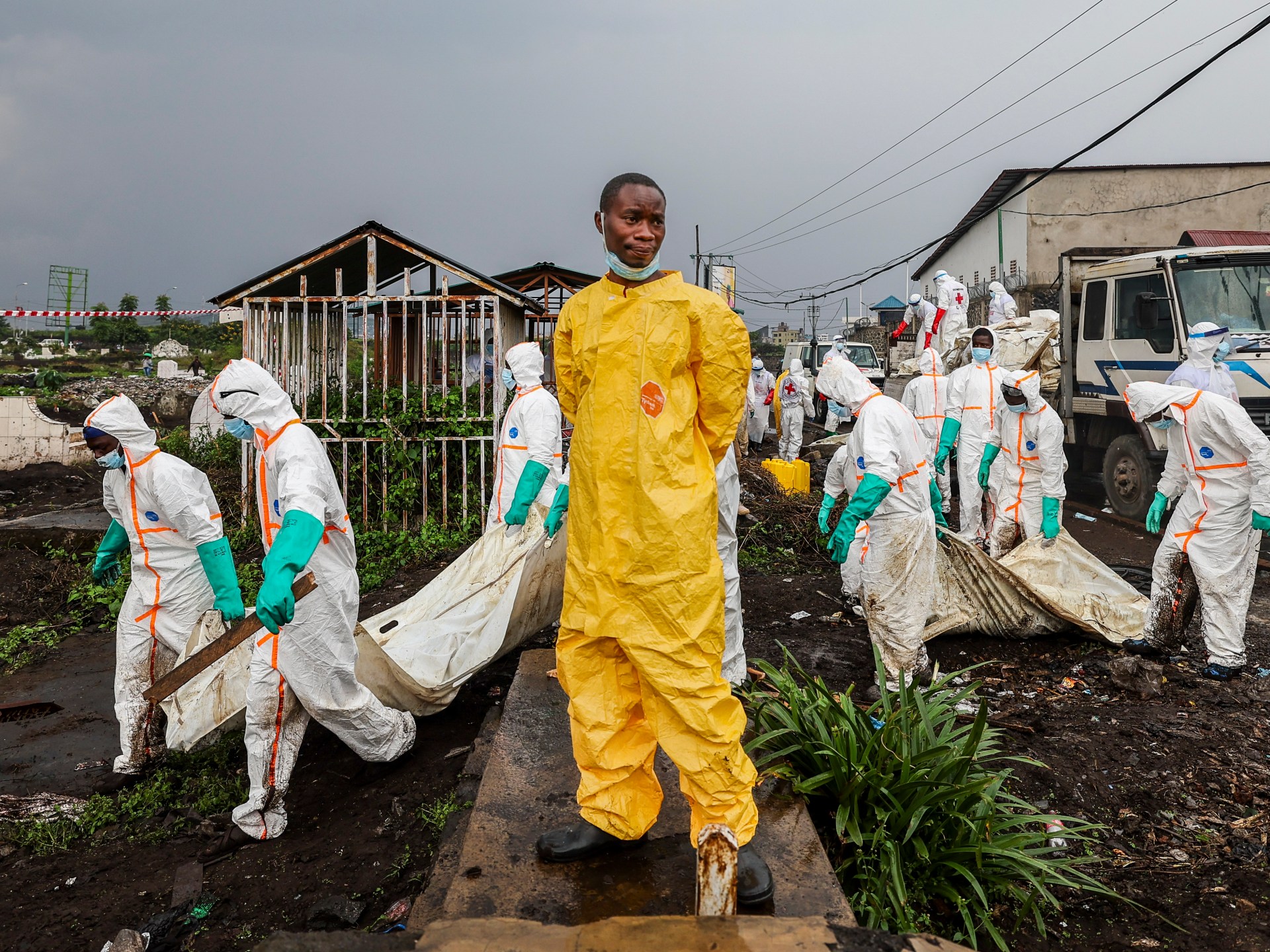Africa
Photos: Goma residents race to bury 2,000 bodies amid ceasefire

A Fragile Peace: Goma After the Battles
In the aftermath of intense fighting, the city of Goma in the eastern Democratic Republic of the Congo (DRC) is grappling with the devastating consequences of war. Last week, the Rwanda-backed M23 rebels captured the city, and while they declared a ceasefire on Monday, the situation remains tense. Sporadic shooting and looting have been reported, leaving residents on edge. Despite the ceasefire holding in most areas, the city is now focused on addressing the immediate humanitarian crisis caused by the conflict. The urgent need to bury over 2,000 victims of the fighting has become a pressing concern, as fears of disease outbreaks grow. The DRC’s communications minister emphasized the importance of swift action to prevent further tragedy, while residents are left to mourn their losses and rebuild their shattered lives.
The Quest for Dignity in Death: Burying the Fallen
The sheer scale of the tragedy in Goma is overwhelming. Over 2,000 bodies, many killed in the brutal fighting that engulfed the city, now lie in overflowing morgues. The lack of adequate refrigeration due to power outages last week has exacerbated the crisis, creating a race against time to identify and bury the dead. Myriam Favier, head of the International Committee of the Red Cross (ICRC) sub-delegation in Goma, described the challenge, noting that the limited land available for burials has added to the urgency. Families are rushing to bury their loved ones, not only to prevent the spread of disease but also to restore a semblance of dignity to those who lost their lives in the chaos. The ICRC is working tirelessly to support the community, but the task ahead is monumental.
Civilians Bearing the Brunt: Stories of Loss and Suffering
The human cost of the conflict in Goma cannot be overstated. Civilians, often caught in the crossfire, have borne the brunt of the violence. Julienne Zaina Barabara, a resident of the Katoyi neighborhood, shared her heartbreaking story. During the fighting, an explosive device detonated near her home, killing one of her children and injuring two others with flying shrapnel. She recounted the harrowing experience of rushing her children to the hospital, where one succumbed to their injuries just three hours later. The other two remain in treatment, with one still carrying shrapnel in his head. Julienne’s story is just one of many, as families across Goma struggle to come to terms with their losses. The United Nations has reported that at least 900 people were killed and nearly 3,000 injured in the days leading up to the city’s capture, with many more affected by the ongoing instability.
Hospitals Overwhelmed: The Struggle to Save Lives
The healthcare system in Goma is stretched to the breaking point. Hospitals, already strained before the conflict, are now overwhelmed with casualties. The influx of injured civilians has created a crisis, with medical staff working around the clock to save lives. Many of the wounded suffer from severe injuries, including shrapnel wounds, gunshot wounds, and blunt trauma. The ICRC has been working to support local medical facilities, but the scale of the need is immense. In addition to treating the injured, healthcare workers are also grappling with the psychological trauma inflicted on survivors. The stories of loss and suffering are a grim reminder of the long-term impact of the conflict on the community.
A City in Ruins: Rebuilding and Recovery
As the people of Goma begin the difficult process of rebuilding their lives, they are faced with the stark reality of a city in ruins. Many buildings have been destroyed or damaged, leaving thousands without safe shelter. The streets are littered with debris, and the once-thriving neighborhoods are now eerily quiet. The economic impact of the conflict is also being felt, as businesses have been forced to close and trade routes disrupted. For many residents, the immediate concern is survival, as access to basic necessities like food, water, and healthcare remains uncertain. The road to recovery will be long and arduous, but the resilience of the people of Goma offers a glimmer of hope.
The Unresolved Conflict: A Cycle of Violence
Despite the ceasefire, the underlying tensions that led to the conflict in Goma remain unresolved. The M23 rebels, backed by Rwanda, have been accused of committing atrocities during their advance, and the DRC government has vowed to reclaim the city. However, the fragile peace holding in Goma is a reminder that the conflict is far from over. The international community has called for dialogue and a peaceful resolution, but the path forward remains unclear. For the people of Goma, the cycle of violence and displacement is all too familiar, and the fear of further escalation lingers in the air. As the city buries its dead and begins to rebuild, the question on everyone’s mind is: what comes next?











